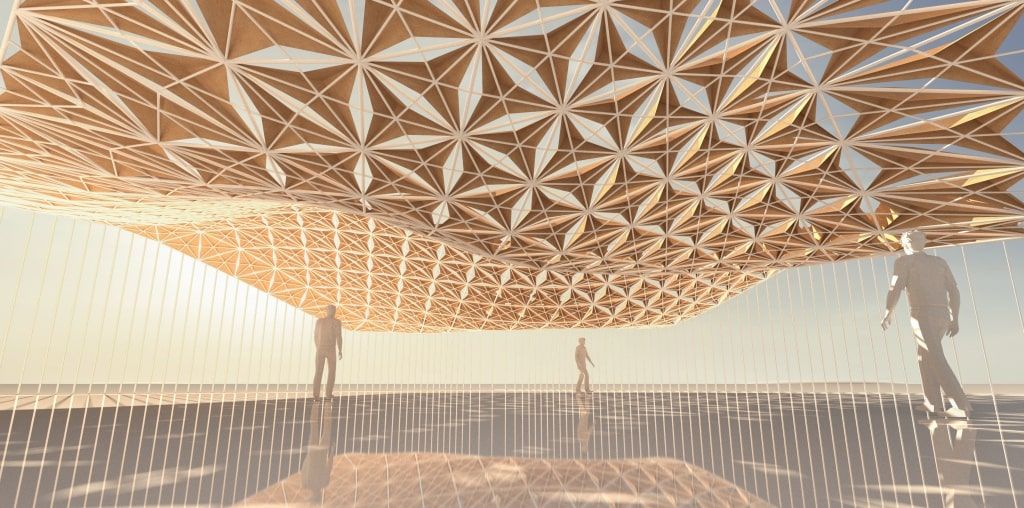Join thousands of people who organise
work and life with Novatr.
Kritika Kharbanda: My journey to becoming a Sustainability Engineer and Co-founder at Cardinal LCA
Kritika Kharbanda
7 mins read
June 12
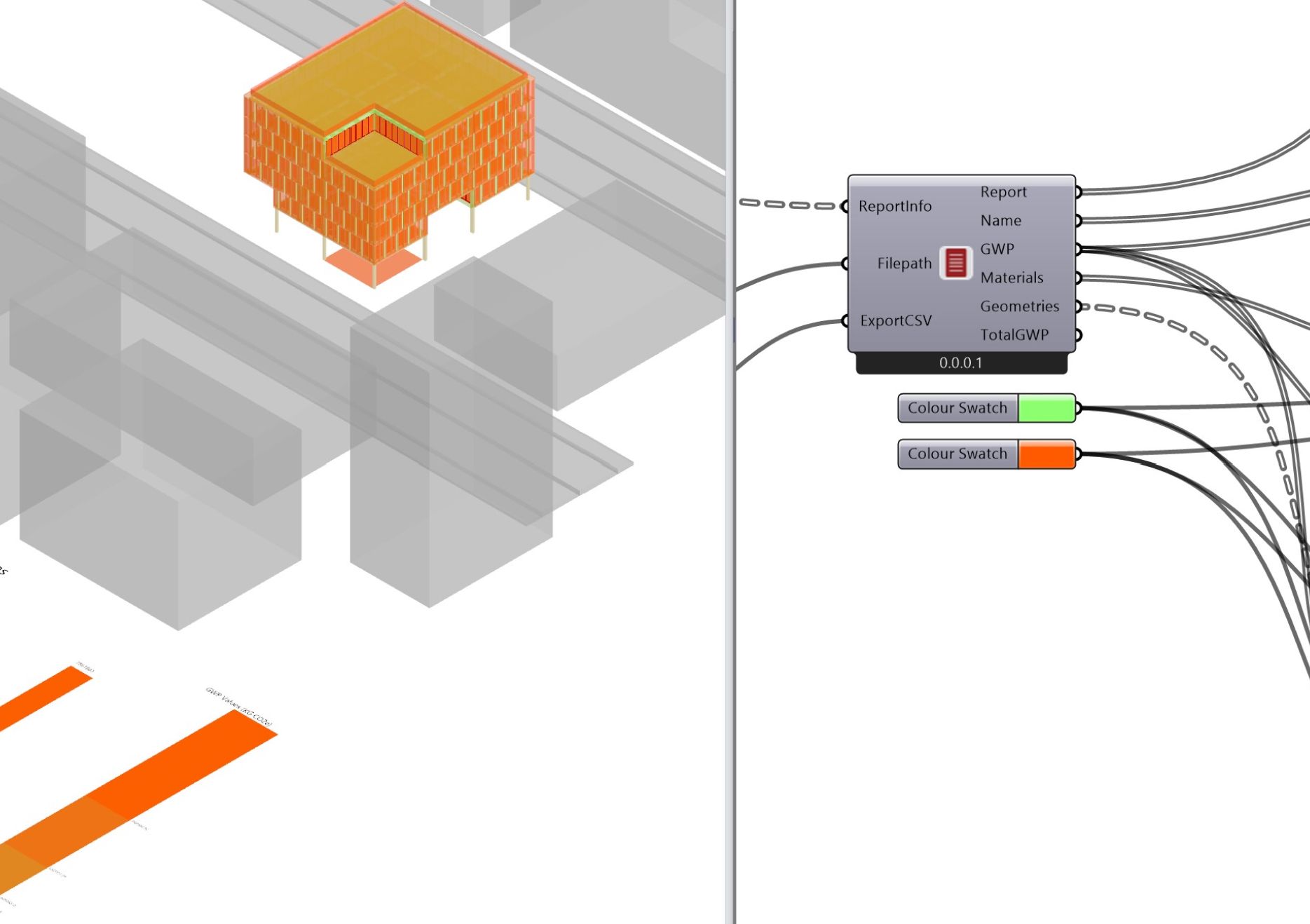

Kritika Kharbanda, Sustainability Engineer at Henning Larsen Architects, Graduate student at Harvard GSD and Co-founder of Cardinal LCA
1. Food for thought - Discussing architecture for dinner
Normal families discuss each other’s day at work or school at dinner tables. If you are in an Indian household, you probably talk about Bollywood, cricket, or politics. Growing up in a household with two architects as parents, we discussed the thickness of the foundation for a particular project or even the shade of paint for the interior wall cladding, on good days. I believe that I started seeing how architecture can be used as an enabler through the dinner time discussions with my families.
After doing the designated lost-Indian-student ritual of rigorous IIT coaching and selling my soul for two years, I found myself at MANIT, Bhopal, on a rainy August afternoon.
2. The perks of being a student - learning and experimenting with new technologies
Unfortunately, if you suck at hand drafting and model making, you absolutely do not qualify to be an architect. Moreover, if you cannot sell the basic candy wrapped in a shiny cover, you are already out. My foundational undergraduate school taught me several things, with the former two exterminating the others.
Being classically conditioned to work hard, I managed to get decent grades throughout my college years. I started exploring new and innovative technologies and shifted away from the conventional softwares that was glorious in my undergraduate school. I also started interning at small architecture offices from my third year onwards, during the semester breaks. Though these internships were unpaid, as you would probably have assumed, I learnt the most during them. Also, knowing the fact that I was not liable because I was not earning, I took advantage of my situation and milked all resources at hand to boost my knowledge and skills.
By my final year, I was well versed in Rhino3D and Grasshopper. Unaware of the power of these tools at hand, I continued to fail miserably at making parametric models. It was at this time that I did the Evolo Skyscraper competition as part of an incredibly talented team. I was the least experienced; being in that atmosphere with the brilliant minds was magnificent! This was my first experience of working within a fast-paced set-up and one of the most valued learning milestones in my life. We ended up winning an Honorable Mention – which of course helped retain this as one of best memories!
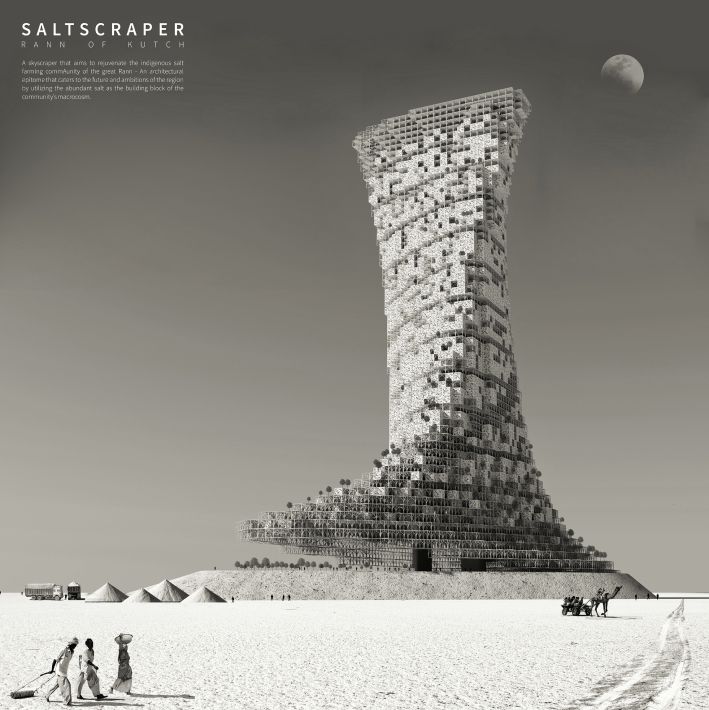
Saltscraper- a skyscraper that aims to rejuvenate the indigenous salt farming community of the great Rann in Gujarat. Honorable mention, Evolo Skyscraper competition 2018.
3. Interning at Kengo Kuma & Associates (Tokyo)
For my official internship, I found myself in the middle of one of Tokyo’s wealthiest neighbourhoods – taking the elevator up to the 24/7/365 oubliette which formed the office for the architect in the race for Pritzker, Kengo Kuma. I remember this as one of the inexplicable experiences of my life.
At KKAA, I learnt a lot about architecture, but I learned much more about self-sufficiency. Being in a strange yet beautiful, crowded city with lonely people, I found my own voice for the first time and realized that my opinion matters. The winter of 2018 blurred into the Spring of 2019, and my short stint at KKAA came to a halt. It was at this time when the amateur researcher in me was intrigued with materials and investigating its synthesis with technology.
[Read: 8 Fun Summer Internships for Architecture Students]
Within three days of being back in India, I left home for Chennai, where I successfully pitched Saint Gobain with my (first ever) research proposal of developing habitats using salt for the Agariya community in the Rann of Kutch. The next five months included trying to find time to progress on my project while working as an architect as Morphogenesis.
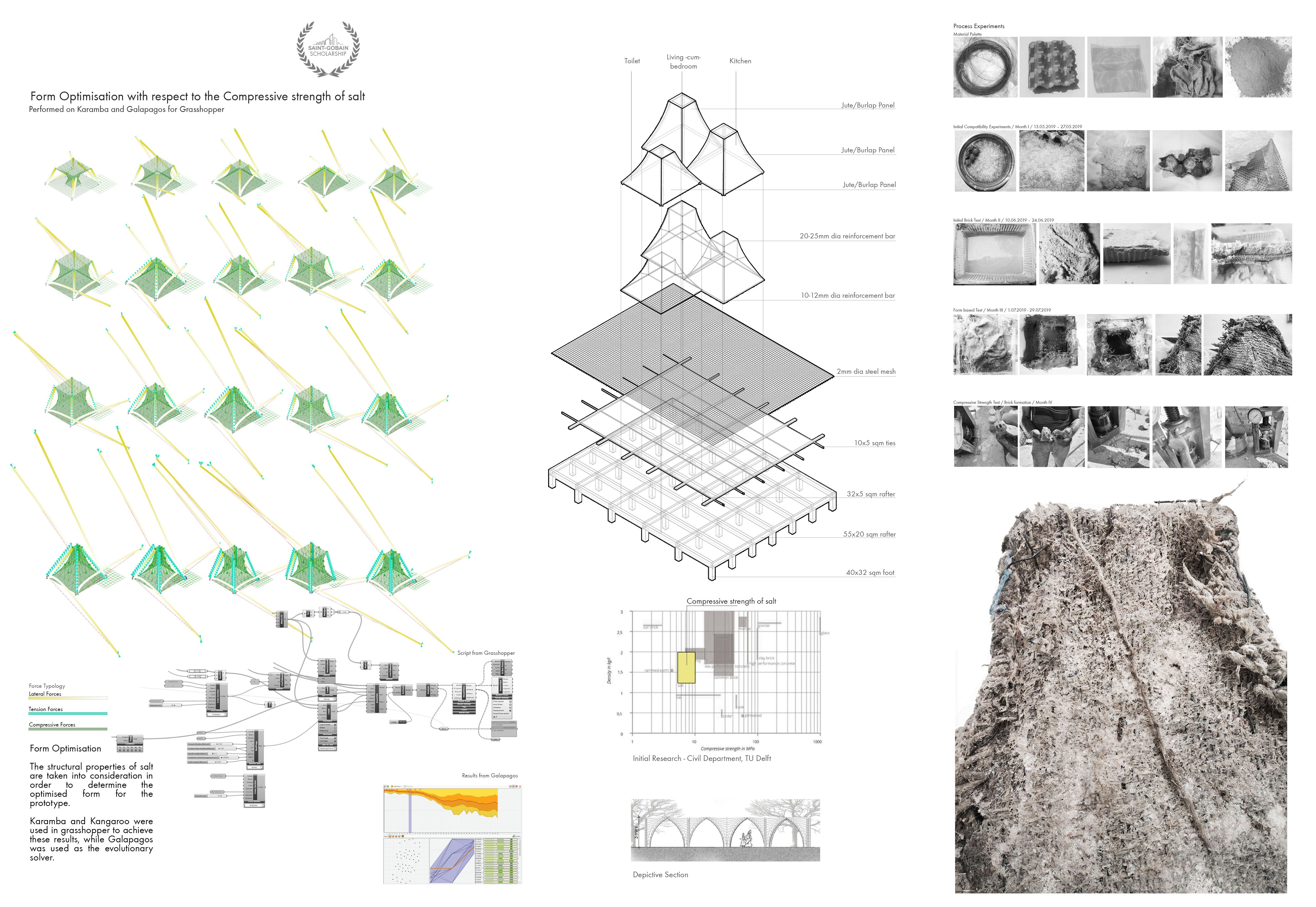
Revitalising the Agariya community, Saint Gobain Scholarship 2019

4. Interning at HLA and getting accepted into Harvard GSD
Spending five miserable months at home, I have never been sure of being out of place. Luck favoured me again. There is this one particular episode of Black Mirror (season 4, episode 3), where a building caught my eye. It was the most famous building in Iceland, the Harpa Concert hall in Reykjavík. That is how I came to know about my current firm, Henning Larsen Architects (HLA). I struck while the iron was hot, applied at their Sustainability Department and joined as an intern in August 2019.
Coming to HLA into the Sustainability Department was a huge factor that oriented my career path choice. I was keen on working within sustainability, but the term was being used loosely everywhere at the time. At HLA, I saw how design and technology can be synthesized together – and that was how I found my niche. I worked on several winning competition entries at my time in HLA, ranging from a mixed use development in Seoul to an office tower in Sydney.
As swift life was in the first half of 2019, suddenly it dropped pace. With so much free time at hand, I started preparing my application for graduate school. Learnings and support from HLA reflected in my application and in March 2020, I received my official letter of admittance to the Harvard GSD.
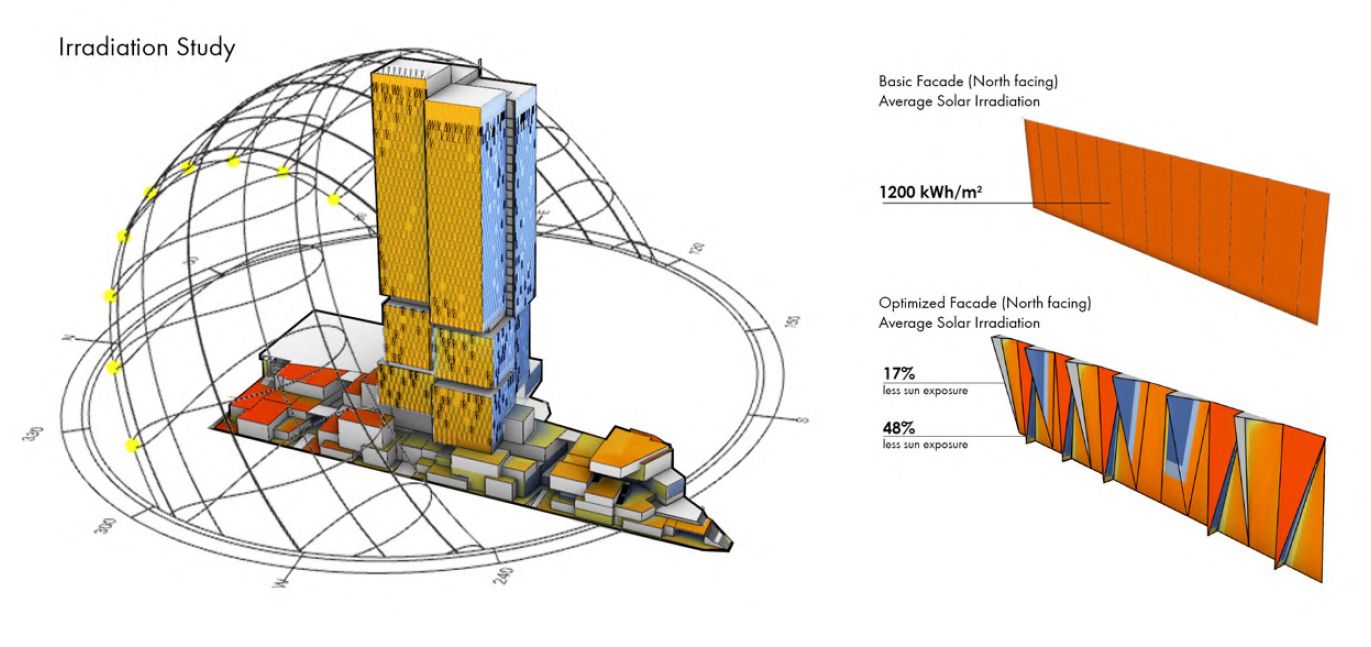
Irradiation studies for facade design, Cockle Bay Park, Sydney, Australia (Competition phase)
5. Studying at Harvard and the Inception of Cardinal LCA
August 2020 marked the beginning of my first semester, and I met my colleagues and faculty. On Zoom. Even though this was not what I had wished for, I was grateful for it.
During this first semester, I joined a seminar class offered by Jonathan Grinham at the GSD, called Advanced Topics on Embodied Carbon in Buildings. This was the only class offered at the GSD that gave an in-depth knowledge on ecological systems, including the energy and focussed upon embodied energy.
I met my colleague and now a dear friend Jessica Chen at this class, and we decided to team up for the final project, wherein we developed our foundational research on Life Cycle Assessment within the architectural workflow. Our project was nominated for GSD publications, and we also received the 6th Annual MDes Research and Development Award for publishing our research.

Early Stage Design LCA Calculation Framework within Grasshopper
6. Navigating through the fast-paced world of startups and the road ahead
Jessica and I were also accepted to work on our venture further as part of the Harvard Innovation Labs Build-It track in January 2021, where Cardinal LCA was born. Suddenly ushered into a fast-paced world of start-ups, we lost our stance for a while because we wanted to focus more on building our tool and the research. Small victories like the Harvard WeCode Startup Pitch Competition gave us confidence. Although the numerous failures taught us more.
We also interviewed several professionals in the AEC industry, as part of the NSF MIT I-Corps program. Through slow yet steady rate, we were able to develop our first trial plug-in for Grasshopper by July 2021. Rest of the summer included tool testing with a set of professionals within the industry and gaining their feedback. Through several rounds of iterations, we finally arrived at a product which, though still petite, needed to be put out there - More for us to learn from our mistakes and have a direction to work towards.
On September 16, we released the Cardinal LCA plugin on Food4Rhino. Within 10 days, there were >100 downloads, 5 reshares and tons of support from the LinkedIn AEC community! We shall also be presenting our tool in the internal computational design networks within Europe and the US, at various smaller events.
Cardinal LCA is a user-friendly tool for architects that analyzes the environmental impact of material decisions in the early design stages.
The main intent behind developing this was to allow architects to understand the consequences of their material choices from Day 1 and to see the trade-offs with other parameters (like daylight, operational energy etc.) more easily. From a business perspective, this analysis gives the team an edge in their proposal in competitions and also helps achieve the green certifications in later stages.
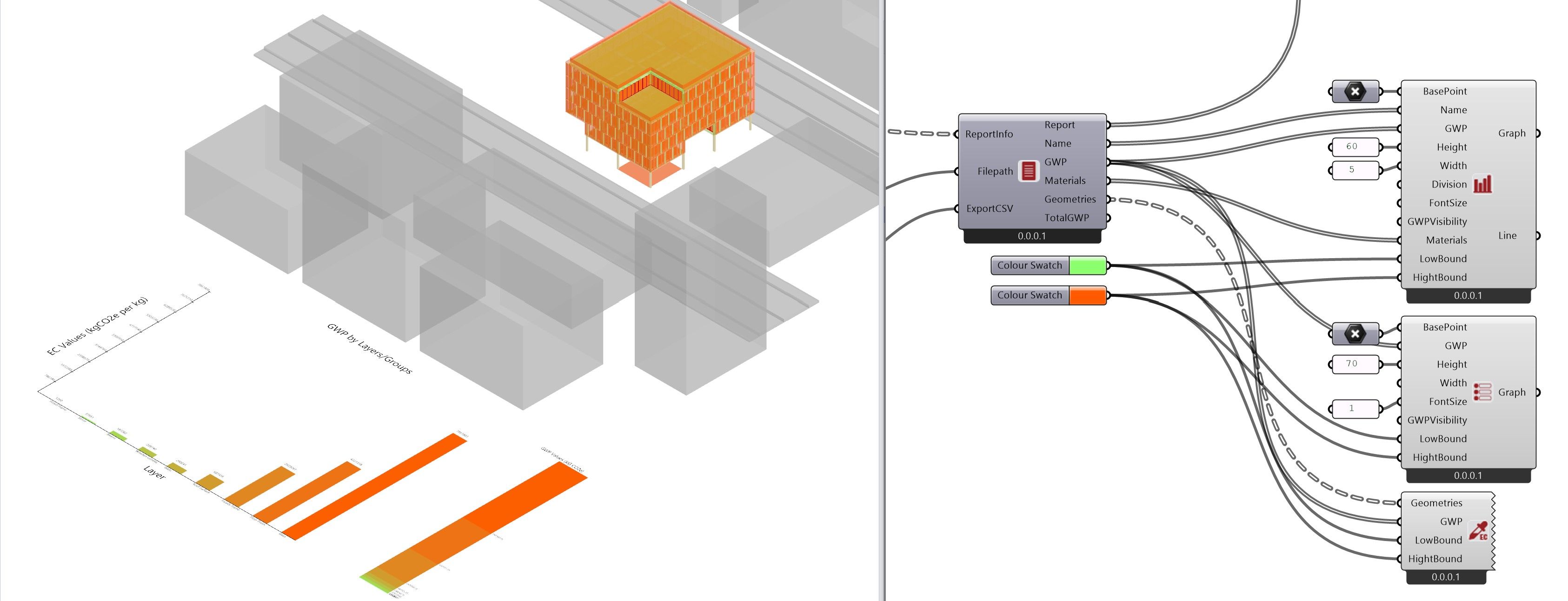
Snapshot from Cardinal LCA use in Grasshopper & Rhino
Currently, our tool focuses on stages A1-A3 because of the EC3 (US) and ICE 2019 (UK) databases, but we are working to expand our database.
We are also developing a plugin for Rhino for non-Grasshopper users. All updates shall be regularly posted on our website and I urge you to reach out with any feedback, criticism, or suggestion.

Join 100,000 designers who read us every month
